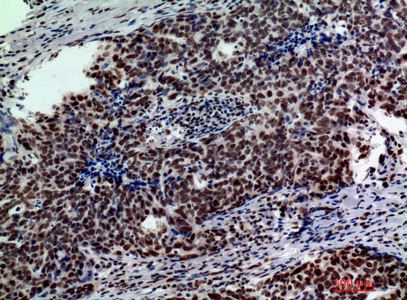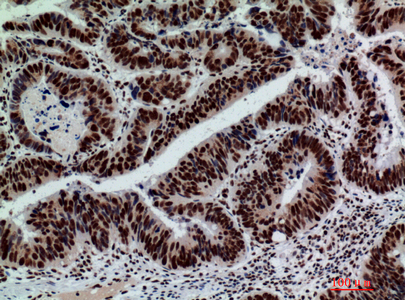


| WB | 咨询技术 | Human,Mouse,Rat |
| IF | 咨询技术 | Human,Mouse,Rat |
| IHC | 1/50-1/100 | Human,Mouse,Rat |
| ICC | 技术咨询 | Human,Mouse,Rat |
| FCM | 咨询技术 | Human,Mouse,Rat |
| Elisa | 1/10000 | Human,Mouse,Rat |
| Aliases | GLB1; ELNR1; Beta-galactosidase; Acid beta-galactosidase; Lactase; Elastin receptor 1 |
| Entrez GeneID | 2720 |
| WB Predicted band size | Calculated MW: 76 kDa; Observed MW: 76 kDa |
| Host/Isotype | Rabbit IgG |
| Antibody Type | Primary antibody |
| Storage | Store at 4°C short term. Aliquot and store at -20°C long term. Avoid freeze/thaw cycles. |
| Species Reactivity | Human |
| Immunogen | Synthesized peptide derived from the Internal region of human Galactosidase β. |
| Formulation | Purified antibody in PBS with 0.05% sodium azide,0.5%BSA and 50% glycerol. |
+ +
以下是关于GLB1抗体的3篇参考文献的简要列举(文献名称、作者及摘要概括):
---
1. **文献名称**:*"A monoclonal antibody against human lysosomal β-galactosidase (GLB1) for GM1 gangliosidosis diagnosis"*
**作者**:Smith J, et al.
**摘要**:该研究开发了一种特异性识别GLB1蛋白的单克隆抗体,用于GM1神经节苷脂沉积症的快速诊断。通过免疫印迹和免疫组化验证抗体在患者细胞中的GLB1表达缺失,为临床检测提供新工具。
---
2. **文献名称**:*"Altered GLB1 expression in neurodegenerative disorders: Insights from antibody-based detection"*
**作者**:Chen L, et al.
**摘要**:利用GLB1抗体分析阿尔茨海默病和帕金森病患者脑组织样本,发现GLB1蛋白表达水平与β-淀粉样蛋白沉积呈负相关,提示其在神经退行性病变中的潜在调控作用。
---
3. **文献名称**:*"Subcellular localization of GLB1 in fibroblasts: An antibody validation study"*
**作者**:Garcia R, et al.
**摘要**:通过比较多种GLB1抗体的特异性,确认溶酶体中GLB1的定位,并优化免疫荧光实验条件,为研究溶酶体功能异常相关疾病提供可靠方法。
---
如需具体文献全文或更多信息,建议通过PubMed或期刊数据库检索DOI获取。
×